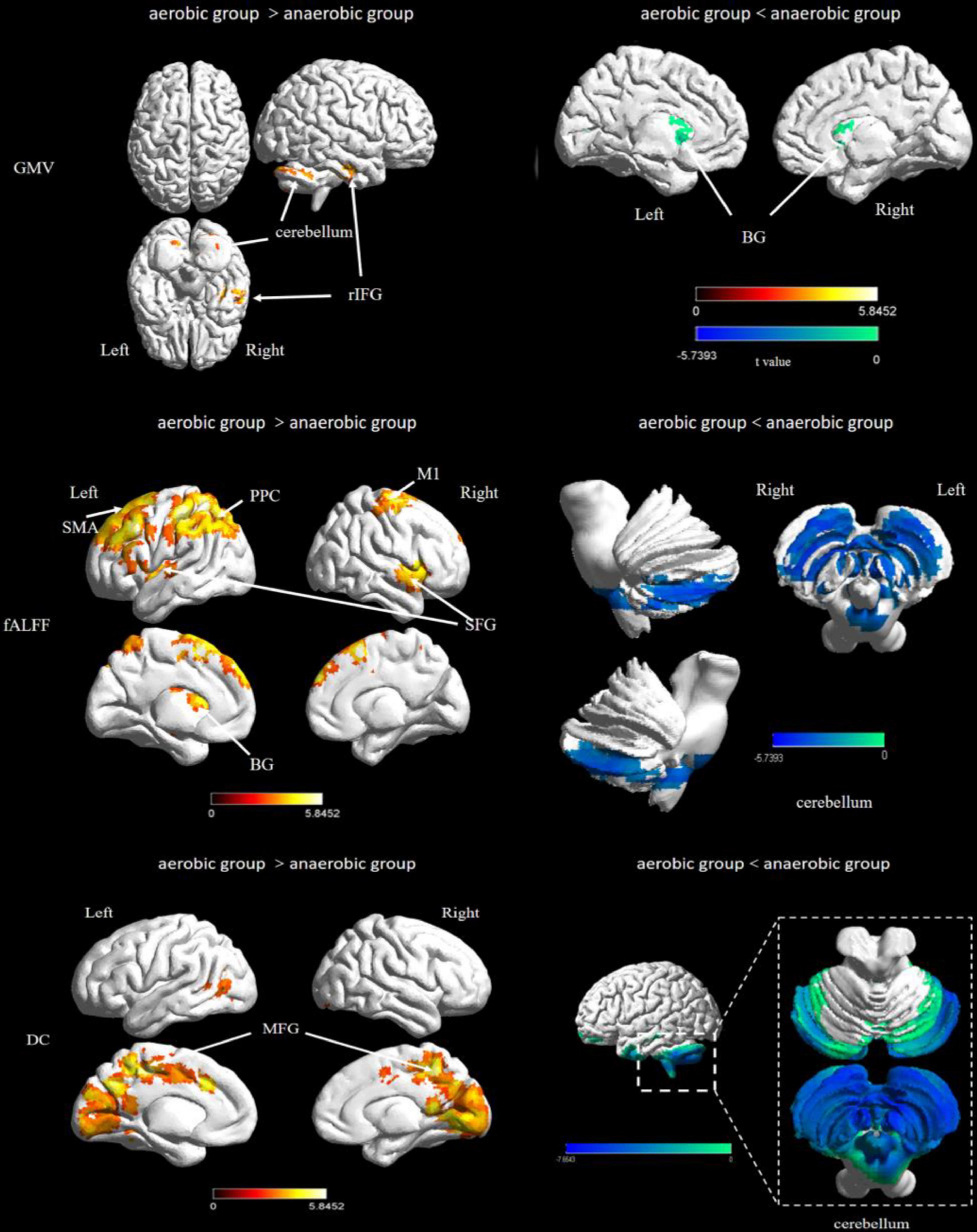The Power of Movement for Mental Health
Pole Dance Transforms Minds
In today’s fast-paced world, mental health challenges are more prevalent than ever. Whether it’s stress from work, feelings of isolation, or the anxiety that accompanies daily life, mental health struggles can often feel overwhelming. However, there is a growing movement that offers hope, not only through traditional forms of therapy but through something creative and empowering—movement.

Pole dancing can transform both your body and mind—boosting self-esteem, reducing stress, and empowering your mental health. This picture was taken during Sway Slow Slink Weekend back in 2019.
Pole dance, a blend of athleticism and artistic expression, is gaining attention not just for its physical benefits but for its significant impact on mental health. This art form, which involves strength, flexibility, and coordination, can help people develop a better connection with their bodies and minds. For many, it serves as an unexpected tool to combat stress, build confidence, and foster resilience. In this blog post, we will explore how the art of pole dance can transform minds, promote mental well-being, and provide a sense of empowerment.
1. The Science Behind Movement and Mental Health
We’ve long known that physical activity is good for mental health. Exercise triggers the release of endorphins—those feel-good hormones that lift your mood and reduce feelings of stress. But what is it about pole dancing, in particular, that offers a mental health benefit beyond a traditional workout?

Pole dance is great to create long lasting and meaningfull friendhips. Pictured here anre my lovely friends Sarah Blackmilk and Rhiannon White being silly at Sway Slow Slink Weekned :)
The Brain and Physical Activity
When we engage in physical activity, our brains experience changes that improve mental clarity, boost mood, and reduce anxiety. Pole dance is no exception. By engaging in this unique form of movement, your brain is not only releasing endorphins, but it's also fostering a deep sense of accomplishment as you master new moves. Every successful spin or trick brings a sense of pride and joy that directly counteracts feelings of sadness or low mood.
Difference of brain structural and functional plasticity characteristics between elite endurance and sprint athletes. ITG, inferior temporal gyrus; BG, basal ganglia; SFG, superior frontal gyrus; PFC, prefrontal lobe cortex; PPC, posterior parietal cortex; MFG, Middle Frontal Gyrus; OTC, occipitotemporal cortex. link
Exercise, including pole dance, triggers brain chemistry changes that help manage stress, anxiety, and depression by releasing mood-enhancing endorphins.
Impact on Anxiety and Depression
A growing body of research suggests that pole dance, like other forms of movement, can reduce symptoms of anxiety and depression. According to a study published in Psychology of Sport and Exercise, exercise of any kind can significantly lower cortisol levels (the stress hormone), reduce feelings of tension, and improve overall mental health. Pole dance, with its focus on coordination, strength, and sensuality, offers a multifaceted approach to mental well-being, combining the benefits of physical activity with the cathartic release of self-expression.
By engaging both the mind and body, pole dance provides a therapeutic outlet for stress and emotional tension. It allows practitioners to escape the pressures of daily life, embrace mindfulness, and focus solely on the moment—elements proven to help reduce anxiety.
2. Pole Dance as a Confidence-Boosting Practice
Confidence is a critical component of mental health. Feeling good about who we are, inside and out, can positively influence our overall well-being. For many people, pole dance becomes a powerful tool for building confidence and improving self-esteem.

Pole dance enhances mental well-being by building self-confidence, promoting mindfulness, and providing an emotional release through movement. First picture is me back when I started - it was one of the first pole pictures I took. You can tell I was cofident enough to even face the camera. Second picture is when I performed and Mystique Art Competition in Arnhem in 2023. You can tell by this powerfull pose that pole has really boosted my confidence.
Building Body Confidence
One of the most significant benefits of pole dance is its ability to transform the way individuals view their bodies. Pole dance is an inherently empowering activity that challenges societal beauty standards and encourages body acceptance. It allows people of all shapes, sizes, and ages to explore their strength and sensuality, breaking down the barriers of self-doubt.
Unlike many fitness routines that emphasize weight loss or body transformation, pole dance celebrates the body for what it can do. As practitioners learn new moves, they gain strength, flexibility, and grace, all of which enhance body confidence. The process of seeing progress—whether it’s gaining strength, mastering a difficult move, or simply feeling more comfortable in one’s own skin—provides a powerful boost to self-esteem.
Celebrating Body Diversity

Kimberly @falling.to.fly in powerful pose in Sway Exclusive collection for Liquid Motion.
Pole dance is a space where body diversity is celebrated. The community encourages practitioners to embrace their unique shapes and sizes, as the art form is about personal growth and expression rather than fitting into a particular mold. This environment of acceptance plays a vital role in boosting mental health, as it allows individuals to let go of insecurities and appreciate their bodies as they are.
3. Pole Dance as a Stress Relief and Mindfulness Practice
In our digital age, stress is an ever-present challenge, often affecting our mental clarity and overall happiness. Pole dance offers an effective way to combat stress through physical activity that requires full attention, enabling participants to step away from the stressors of daily life.

Pole dance enhances mental well-being by building self-confidence, promoting mindfulness, and providing an emotional release through movement. Pictured here one of the participants of Slow Sway Weekend 2019.
Escape from Daily Pressures
Pole dancing requires you to be completely immersed in the movement. This intense focus can lead to a sense of "flow"—a mental state in which time seems to stand still and you are entirely absorbed in the activity. This state of mindfulness is proven to reduce feelings of stress and anxiety. By concentrating on the intricate movements and maintaining a mind-body connection, pole dancers can forget about their worries and become present in the moment.
For many practitioners, the rhythmic motions of pole dance serve as a form of active meditation, helping them quiet their minds and release pent-up tension. This type of mindful movement has been linked to a reduction in cortisol, the hormone associated with stress.
Movement as Meditation
Meditation and mindfulness practices have long been recognized for their ability to reduce stress, but pole dance adds a physical element that makes it even more effective. The combination of fluid motion, focused attention, and controlled breathing creates a deeply relaxing experience that can provide lasting mental clarity and peace.
4. Developing Mental Resilience Through Pole Dance
The journey of learning pole dance is not always easy. It takes patience, perseverance, and a willingness to fail and try again. This process of overcoming physical challenges has a direct impact on mental resilience.

Pole dance builds mental resilience by pushing you beyond your limits, helping you conquer both physical and emotional challenges with determination.
Overcoming Challenges
Pole dancing is challenging. Every move requires precision, strength, and timing. For many, the experience of working through difficulties in their pole journey translates to an increased ability to face challenges in other areas of life. As individuals work through obstacles on the pole—such as mastering a spin or executing a difficult transition—they build resilience that helps them navigate personal and professional challenges.
The sense of accomplishment that comes with mastering a move, after hours of practice and effort, provides a powerful mental boost. This mindset of persistence and determination often carries over into other aspects of life, improving problem-solving skills and emotional fortitude.

For many, the experience of working through difficulties in their pole journey translates to an increased ability to face challenges in other areas of life. As individuals work through obstacles on the pole—such as mastering a spin or executing a difficult transition—they build resilience that helps them navigate personal and professional challenges.
Building Mental Toughness
Pole dancers often speak about the mental toughness they develop through their practice. The discipline and focus required to progress in pole dancing mirror the mental skills needed to succeed in other endeavors. As dancers conquer new challenges and face their fears (whether it's learning a complex move or performing in front of others), they develop mental toughness that helps them handle stress and setbacks with greater ease.
5. The Social and Community Aspect of Pole Dance
Mental health thrives in communities of support. One of the most often overlooked benefits of pole dance is the sense of community it provides. The pole dance community is known for its inclusivity and empowerment, creating a supportive space where individuals can share experiences and form connections.

The supportive pole dance community fosters a sense of belonging and empowers individuals to embrace their bodies and self-worth. Pictured here the audience at one of the Irish Pole Dance Academy Studio Showcase in Dublin.
Supportive Environment
Pole dance studios and classes often foster a supportive and non-judgmental atmosphere where individuals feel safe to express themselves. This environment is particularly beneficial for mental health, as it allows practitioners to feel understood and encouraged. Many dancers have shared that they feel a deep sense of belonging and connection, which helps them feel less isolated and more empowered.

Supportive and non-judgmental atmosphere where individuals feel safe to express themselves.
Building Social Connections
Beyond the physical practice, pole dance can be a way to form meaningful relationships. Whether it's the camaraderie in a class or connections made through social events or performances, pole dancers often describe the friendships and support systems they gain as being integral to their mental well-being. Feeling part of a like-minded community can alleviate loneliness and offer emotional support when needed.

Pole dance fosters meaningful social connections, offering a supportive community where individuals can bond, share experiences, and uplift one another. Pictue taken during Sway Slow Slink Weekend 2019.
6. Pole Dance and Sexual Health: The Connection to Self-Concept
In addition to physical strength, pole dance offers a unique opportunity for individuals to connect with their sensual side. This connection can have profound effects on one’s sexual self-concept, helping to cultivate a healthier, more confident attitude toward sexuality.

Pole dance empowers individuals to embrace their bodies and sexuality, fostering a positive self-concept and improving sexual health by enhancing confidence and self-expression. Rhiannon White in her signature sensual pose captured during her performance.
Enhancing Sexual Confidence
The sensual nature of pole dance allows individuals to explore their bodies and embrace their sexuality in a non-judgmental space. For many, this can lead to increased sexual self-esteem and a positive body image. The confidence built through pole dancing often extends beyond the dance studio, improving relationships and enhancing sexual health.
Liberating Movement
Pole dance is a liberating experience that allows people to express themselves in a way that feels empowering and freeing. This sense of liberation fosters a positive relationship with one's body, which can lead to greater self-acceptance and improved sexual health.

Pole dance offers a form of liberating movement, encouraging individuals to express themselves freely, release emotional tension, and celebrate their body’s strength and beauty. Samanta and Magda performing in douet durind the Showcase at Sway Slow Slink Weekned.
7. Getting Started: Pole Dance as a Tool for Mental Health
If you're intrigued by the idea of using pole dance as a mental health tool, you might be wondering how to get started. Here's how you can begin:
How to Start
Many pole dance studios offer introductory classes, which are designed to teach basic movements and proper technique. These classes are a great place to begin your journey, as they offer a supportive and structured environment. If you're not near a studio, there are also online resources and tutorials available to help you practice at home.

Ready to start your pole dance journey? Join Arlene Caffrey at the Irish Pole Dance Academy, where you can learn tricks, flows, and floorwork from a seasoned instructor. As a long-time friend of Sway, Arlene often wears our outfits in class, embodying strength and style.
Link: Irish Pole Dance Academy – Subscribe and Learn from Arlene
Safety and Well-Being
While pole dancing is generally safe, it's important to prioritize safety. Make sure to start with a qualified instructor who can guide you through proper technique and ensure you're performing moves correctly to avoid injury.
Setting Realistic Expectations
Pole dancing is a journey, not a destination. Progress may be slow at times, but the key is to be patient and persistent. Focus on enjoying the process of learning and self-discovery, rather than expecting immediate results.
Wear the outfit that will move with you

Choosing the right gear is key for comfort and safety during your pole dance class. See our guide on the best attire to maximize your experience.
When preparing for your first pole dance class, choosing the right attire is essential for both comfort and performance. Opt for fitted clothing, such as shorts and a tank top or sports bra, to allow your body to grip the pole and move freely. Avoid loose fabric, as it can interfere with your movement and safety. Many pole dancers also prefer to wear knee pads for added comfort, especially when working on floorwork. If you're looking for more detailed advice on the best pole dance gear to wear, be sure to check out our comprehensive guide on What to Wear to Pole Dance Class here.
The Transformative Power of Pole Dance
Pole dance isn't just a physical workout; it's a transformative practice that nurtures mental health, fostering self-confidence, mindfulness, and emotional well-being. From boosting mood through endorphin release to building resilience through overcoming challenges on the pole, this art form touches every aspect of the mind-body connection. Studies have shown that exercise, including pole dance, triggers the release of brain chemicals like endorphins and BDNF, which help reduce symptoms of anxiety and depression, making it a valuable tool for mental health management.

Rhiannon White, Sway’s first model and muse, embodies the transformative power of pole dance. Having battled psoriasis for most of her life, which at one point covered 80% of her body and her entire face, Rhiannon found strength through dance. Her journey to embrace her body and confidence is a testament to how pole dance can help overcome personal struggles. Read more about Rhiannon's inspiring story and how pole dance has empowered her to reclaim her confidence and mental health here.
Moreover, pole dance creates a supportive community that encourages self-expression and body positivity. It teaches individuals to embrace their bodies, cultivate self-love, and push through both physical and mental barriers. The beauty of pole dance lies not just in its athleticism, but in its ability to help people reclaim their sense of self-worth and find strength in vulnerability.
As more people discover the psychological benefits of movement, it's clear that pole dance is more than just a fitness trend—it's a tool for mental transformation. Whether you're a seasoned dancer or a beginner looking to improve your mental well-being, incorporating pole dance into your life could be a life-changing step toward better mental health and self-awareness. Why not take the first step today and see how the art of movement can transform your mind?
Sources referenced in the blog, along with links to the respective articles:
1. PLOS ONE - "The Impact of Pole Dancing on Mental Health and Body Image": This article examines how pole dancing can help improve mental well-being and enhance self-esteem by exploring its impact on body image and sexual self-concept. Link
2. American Psychological Association (APA) - "Exercise and Mental Health": This resource provides insights into how physical exercise, including pole dancing, can help manage stress, anxiety, and depression. Link
3. Smithsonian Magazine - "How Exercise Boosts the Brain and Improves Mental Health": This article delves into the science behind how physical exercise stimulates the brain's release of key chemicals like BDNF and endorphins, which help combat mental health issues. Link
These sources provide valuable scientific data, expert opinions, and case studies supporting the idea that movement, particularly pole dance, can positively impact mental health.



